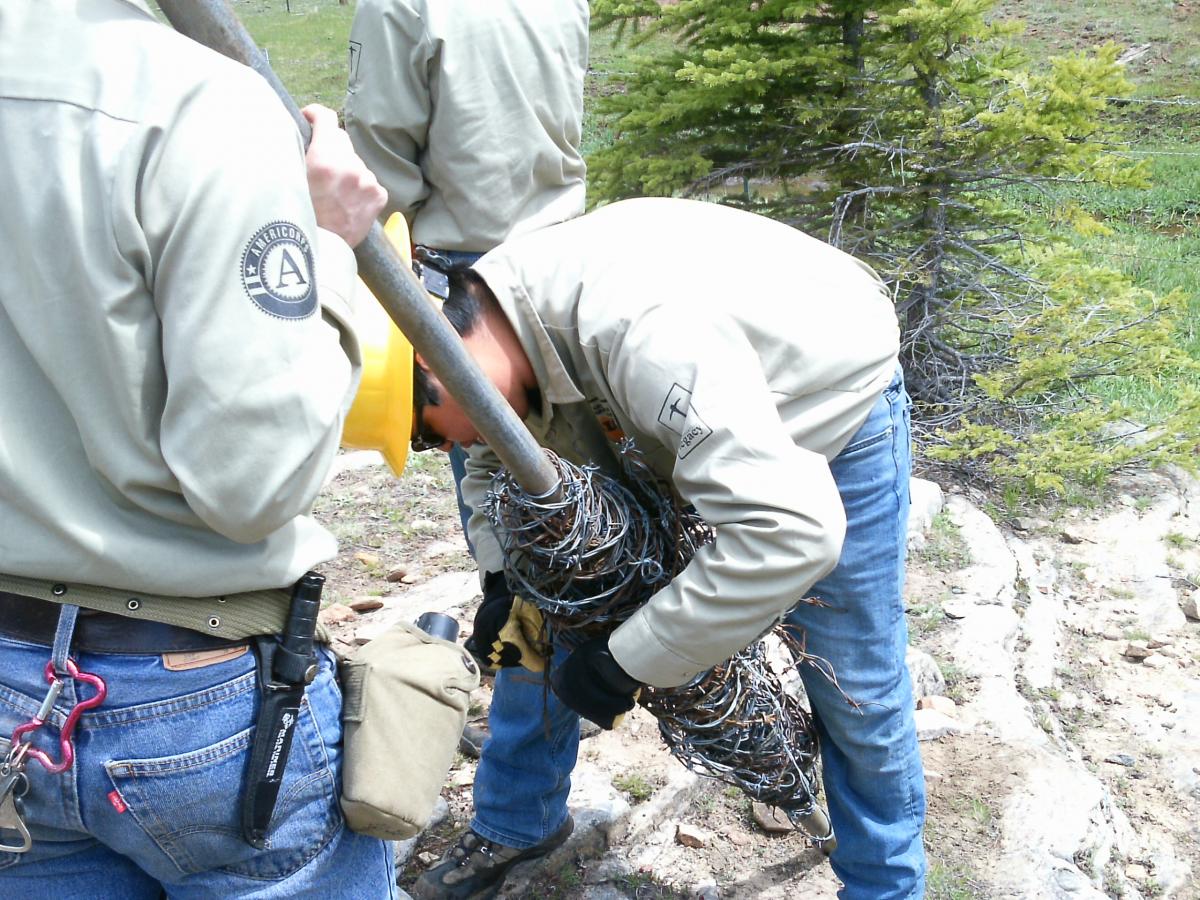
Name of Corps
Arizona Conservation Corps
Location of project
Grand Canyon National Park
When did the project take place?
May-August 2016
Describe the project. What did the crew do?
The crew had the opportunity to partner with the Grand Canyon Trails Department to clear overgrown trails of vegetation and burn areas where the trail was poorly defined. The crew cleared 6.75 miles of trail and installed 174 erosion control structures, making it much more visible, safe, sustainable, and accessible for park visitors. AZCC was successful in completing 12 weeks of project work in Grand Canyon National Park and followed the direction of the work plan outlined in the grant agreement. AZCC worked closely with NPS staff to ensure the project goals were reasonable, attainable, and appropriate for this crew. Based on our long history of working at Grand Canyon NP, AZCC was confident in the support of the NPS staff and in ensuring a successful experience not just in terms of work accomplished, but also in the quality of experience and training received by the participants on this crew.
How did this project partnership help the park? What issues did this project address?
Facilitated by Jennifer O’Neill, the Partnerships Coordinator with NPS, the crew first worked with range experts at NPS on fencing off an historical spring so that the growing bison population wouldn’t contaminate the spring source. The crew had a lot of fun spotting the small herd of bison from time to time, and the challenge of fencing was a new skill that they enjoyed learning. In all, the crew repaired or replaced 1600 feet of fence, restoring over 65,000 square feet of the spring source. The crew then went to work with vegetation experts with NPS. They created terraced basins and seed beds which they then planted native species in. They planted 640 native plants and grasses. The native species were planted both to support a healthy ecosystem and to help control erosion. They also got to collect native seeds and pull invasive/noxious plants from the surrounding area. The crew learned about the impact of invasive species and how to manage them. The crew then went to work with the Grand Canyon trails department to clear badly overgrown trails of vegetation. They also worked in burn areas where the trail was poorly defined. The crew cleared 6.75 miles of trail and installed 174 erosion control structures, making it much more visible, safe, sustainable, and accessible for park visitors.

What skills did Corpsmembers use/learn on this project?
In May of 2016, a crew of 8 young native people from throughout the Southwest United States were hired and trained by AZCC with the purpose of restoring and protecting the Ancestral Lands surrounding the North Rim of Grand Canyon National Park while also developing professional skills. During a week-long orientation and training, the corpsmembers were trained in Wilderness First Aid, as well as outdoor living skills including Leave No Trace ethics. The crew then had the opportunity to work with a wide array of partners in various departments of the National Park Service (NPS).
Quote from Corps staff about the project/about the partnership with NPS
“Working with Jennifer O’Neill and NPS was a smooth process. The crew needed a lot of coordination because they worked with so many different departments within the Park. It was great for the crew to get so much experience in different fields, from Vegetation to Range, to Trails and Interpretive. The crew got a taste for everything NPS does at the Grand Canyon, and gained a deep appreciation for the hard work it takes to maintain the National Park. Jenn O’Neill helped tremendously in connecting the crew with the varied projects.” –Matthew Hurst AZCC Program Coordinator
Quote from NPS staff about the project/about partnership with Corps
Throughout all of their many projects that summer, the crew made a positive impact on Grand Canyon National Park and its staff. Jennifer O’Neill (NPS) praised the crew, writing that, “Skylar’s crew were described by project managers as hard workers, solid and dependable. In challenging terrain and weather, they produced high quality work and consistently gave their best effort.” She added, “The crew completed several important and high profile projects for the park. As GRCA moves forward with a Bison Management Environmental Assessment this will become quite evident to the public as well. In particular, the exclosure fencing project they completed will inform data about bison behavior and the sensitivity of water sources on the North Rim, which are usually significantly impacted by bison herds.
Quote from Corpsmember
(what did you learn…what did it mean to serve at a National Park…etc.)
“National Service makes me think of the National Parks and Monuments we’ve worked for with AZCC. I think of the NPS Rangers and workers that I have worked alongside, and the impact that they make. At AZCC I’ve helped improve trails with my crew, worked directly with NPS staff and the public, and traveled to different areas throughout Arizona. From my work, I’ve seen how it positively impacts the communities we go to. We leave the worksite better than before. Our work makes us more aware of the environment and environmental issues. Being a part of this movement leads to a lot of personal growth and transformation as one volunteers for National Service.
I’ve seen a big difference in myself from this experience. I’ve learned to push myself to the limit, be patient and understanding, and learned to see from other people’s perspectives. I’ve learned to keep and achieve personal goals as well.
To keep this momentum going, I’ll be involved in future volunteer opportunities or job positions that work closely with the environment. I’ve set a goal to become a National Park Service Ranger at the Grand Canyon. If it weren’t for this program, I wouldn’t have made amazing contacts with outstanding, hard-working individuals, and known of new opportunities within reach.”
–Justine Pike
AZCC Corpsmember





































































